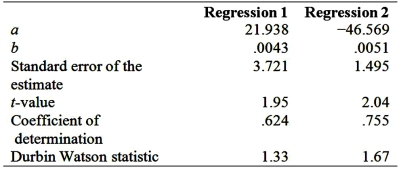Whittenberg Distributors, a major retailing and mail-order operation, has been in business for the past 10 years. During that time, its mail-order operations have grown from a sideline to represent more than 80 percent of the company's annual sales. Of course, the company has suffered growing pains. At times, overloaded or faulty computer programs resulted in lost sales. And scheduling temporary workers to augment the permanent staff during peak periods has always been a problem.
Peter Bloom, manager of mail-order operations, has developed procedures for handling most problems. However, he is still trying to improve the scheduling of temporary workers to take customer telephone orders. Under the current system, Peter keeps a permanent staff of 60 employees who handle the base telephone workload and supplements this staff with temporary workers as needed. The temporary workers are hired on a daily basis; he determines the number needed for the next day the afternoon before based on his estimate of the upcoming telephone volume.
Peter has decided to try regression analysis to improve the hiring of temporary workers. By summarizing the daily labor-hours into weekly totals for the past year, he determined the number of workers used each week. In addition, he listed the number of orders processed each week. After entering the data into a spreadsheet, Peter ran two regressions. Regression 1 related the total number of workers (permanent staff plus temporary workers) to the number of orders received. Regression 2 related only temporary workers to the number of orders received. The output of these analyses follows:
Regression model: W = a + b × T
where:
W = workers; T = telephone orders
 Required:
Required:
1. Peter Bloom estimates that Whittenberg Distributors will receive 12,740 orders during the second week of December.
a. Predict the number of temporary workers needed for this week using regression 1. Round your answer to the nearest whole number.
b. Using regression 2, predict the number of temporary workers needed during this week. Round your answer to the nearest whole number.
2. Which of the two regression analyses appears to be better? Explain your answer.
3. Describe at least three ways that Peter Bloom could improve his analysis to make better predictions than either of these regression results provides. (CMA Adapted)
Correct Answer:
Verified
Feedback: 1.
a. Using th...
View Answer
Unlock this answer now
Get Access to more Verified Answers free of charge
Q104: US Best Corporation produces and distributes products
Q105: Armer Company is accumulating data to use
Q108: Regression analysis is increasingly being used in
Q111: Green Mountain College is a 5,000 student
Q112: Andrews & Henderson Inc. is a manufacturer
Q113: School Kids' Compact Disc Store expanded the
Q113: Austen Co.produced a pilot run of eighty
Q114: Train Express Co., which manufactures locomotive engines,
Q118: Elisko Inc. is a major book distributor.
Q120: Clothes for U is a large merchandiser
Unlock this Answer For Free Now!
View this answer and more for free by performing one of the following actions

Scan the QR code to install the App and get 2 free unlocks

Unlock quizzes for free by uploading documents